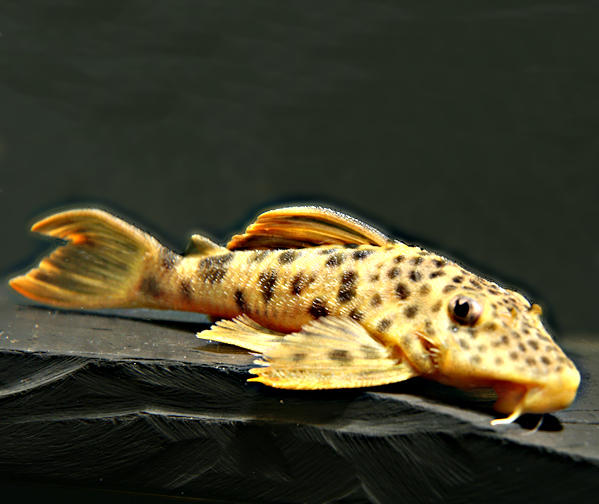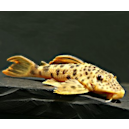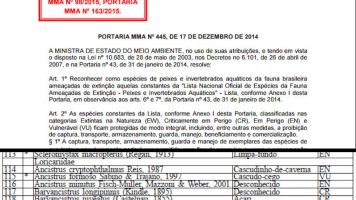Hello catfish freaks,
today I want to introduce you in three articles from the current issue of Aquaristik Fachmagazin:
Ingo Seidel "About spectacular new whiptails and news from this fish group" ("Über spektakuläre neue Hexenwelse und Neuigkeiten von dieser Fischgruppe")
Pseudohemiodon apithanos
Ingo reports the import of the Pseudohemiodon apithanos by aqua-global at the beginning of the year. These plecos have in contrast to the hitherto known Pseudohemiodon apithanos (now better Pseudohemiodon sp. aff. apithanos) a net pattern on the head. This pattern corresponds to the scientific description of Pseudohemiodon apithanos by Isbrücker & Nissen, 1978. Isbrücker and Nissen descripted them from Río San Miguel, Provinz Napo, Ecuador.
Ingo assume that the Columbian exporter received these plecos over Leticia. Leticia is a town in the corner of the border from Colombia, Peru and Brazil. Most this plecos have a length between 23 and 25.
Rhadinoloricaria macromystax
It has also been widely reported on the first import of Rhadinoloricaria macromystax. Günther described these species from upper Amazon basin in Ecuador and Peru in 1869. Meanwhile, the species was also found in the Essequibo Basin in Guyana. This speaks for a wide distribution of the species.
In Colombian Orinoco basin there is to be found another, not descripted species of Rhadinoloricaria.
With respect to Covain et. al. "Molecular phylogeny of the highly diversified catfish subfamily Loricariinae (Siluriformes, Loricariidae) reveals incongruences with morphological classification" Ingo informs that:
- the genus Apistoloricaria is now a synonym of Rhadinoloricaria
- the species Crossloricaria bahuaja and Crossloricaria rhami are now in the Genos Rhadinoloricaria, therefore now Rhadinoloricaria bahuaja and Rhadinoloricaria rhami
Crossloricaria variegata
Crossloricaria variegata was imported from Colombia. These species come from the Departamento Choco, in near to the border of Panama.
Sturisomatichthys cf. tamanae
Ingo found this specie at Pier Aquatics in England.
With respect to the mentioned above work of Covain et. al. Ingo note that the species Sturisoma aureum and Sturisoma festivum are assigned to the genus Sturisomatichthys:
So now Sturisomatichthys aureus and Sturisomatichthys festivus.
Daniel Konn-Vetterlein "Aphanotorulus ammophilus"
Daniel wrote a short report over Aphanotorulus ammophilus (L94 / L123) and Aphanotorulus popoi. He informs that he found Aphanotorulus popoi regularly on sandbanks in the morning hours during his stay in Bolivia.
Because he found this plecos on sandbank and these plecos have a reduced dentition he assume that these plecos prefer carnivore food.
Furthermore, Daniel indicated that recently the genus Squaliforma was dissolved and several of these species have been translated into the genus Aphanotorulus. (Look: C. Keith Ray & Jonathan W. Armbruster "The genera Isorineloricaria and Aphanotorulus (Siluriformes: Loricariidae) with description of a new species")
Dr. Axel Zarske & Prof. Dr. Hartmut Greven "Sperm in the intestine – how so?" ("Spermien im Darm – wie das?")
How does fertilization occur in Corydoras species? The authors summarize the current situation and present the different opinions. A positive aspect is the mention of “gray literature” and “citizens’ sciences”. There is, however, no solution to the question.
Ingo Seidel "Two new Corydoras are described in honor of German aquarists" ("Zwei neue Panzerwelse zu Ehren von deutschen Aquarianern beschrieben")
Ingo informs over the scientific description of two Corydoras:
Corydoras knaacki – in honor of Dr. Joachim Knaack
Joachim devoted more than 60 years to studies on the South American fish fauna. He described 17 species of Corydoras, for example Corydoras sterbai and Corydoras pygmaeus.
(Look: Tencatt & Evers "A new species of Corydoras Lacépède, 1803 (Siluriformes: Callichthyidae) from the río Madre de Dios basin, Peru")
Corydoras eversi – in honor of Hans-Georg Evers
Enjoy reading of Aquarium Fachmagazins.



